Tillandsia Cocoensis
Click thumbnails for full size, scaled to a new window.
Tillandsia Cocoensis
Brazil species. Not yet published. Captured in the BCR as T. 'Cocoensis' until it is published.
Derek Butcher 2002 ... "Probably only in Australia (SA) 5 or 6 years ago and apparently not yet published or entered in Species Databases.
Formerly listed as a form of tennuifolia but also like araujei, but doesn't flower at same time as either.
Collectors are looking for leaves 90 degree to stem and wavy edge to flowers."
Len Colgan .... "For those who might not know, this is the plant which Renate sent old Mr Thieken from Germany to Morro do Coco in Brasil to collect (from information she had been given), but he incorrectly brought back a completely different plant from a close location at Morro do Coco. Of course, that plant is now Tillandsia thiekenii."
From BCR ... "Plant imported from Germany to Australia in 1991 but originally wild-collected. Has strong links to Tillandsia tenuifolia in the broad sense. Flowers and offsets well and is well established in Australian collections. Tenuifolia Group. Reg. Doc. 6/2017 by D Butcher. Country of origin: Brazil."

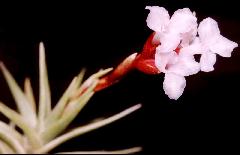

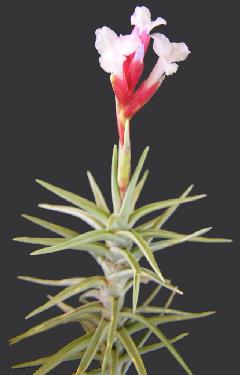
| Ken Woods 11/04. |
Ken Woods 05/10. |
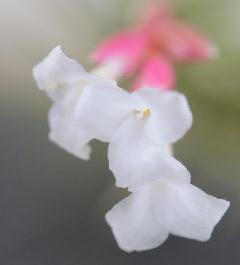
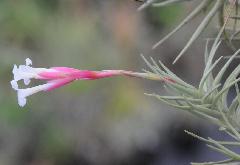
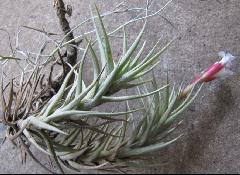
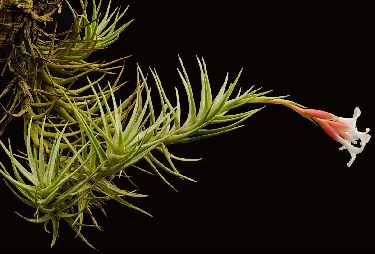
| Peter Tristram 04/10. |
Chris Butler 04/10. |
Peter Tristram 04/12. |
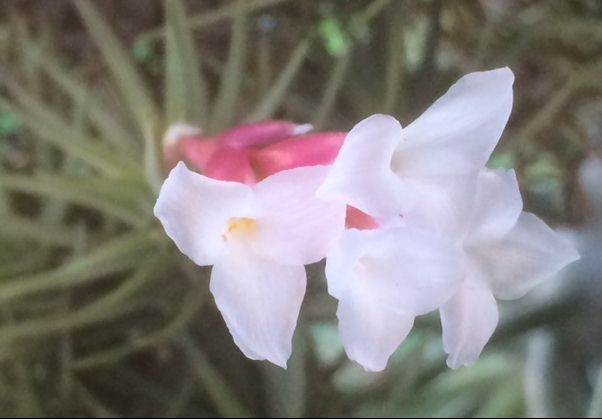
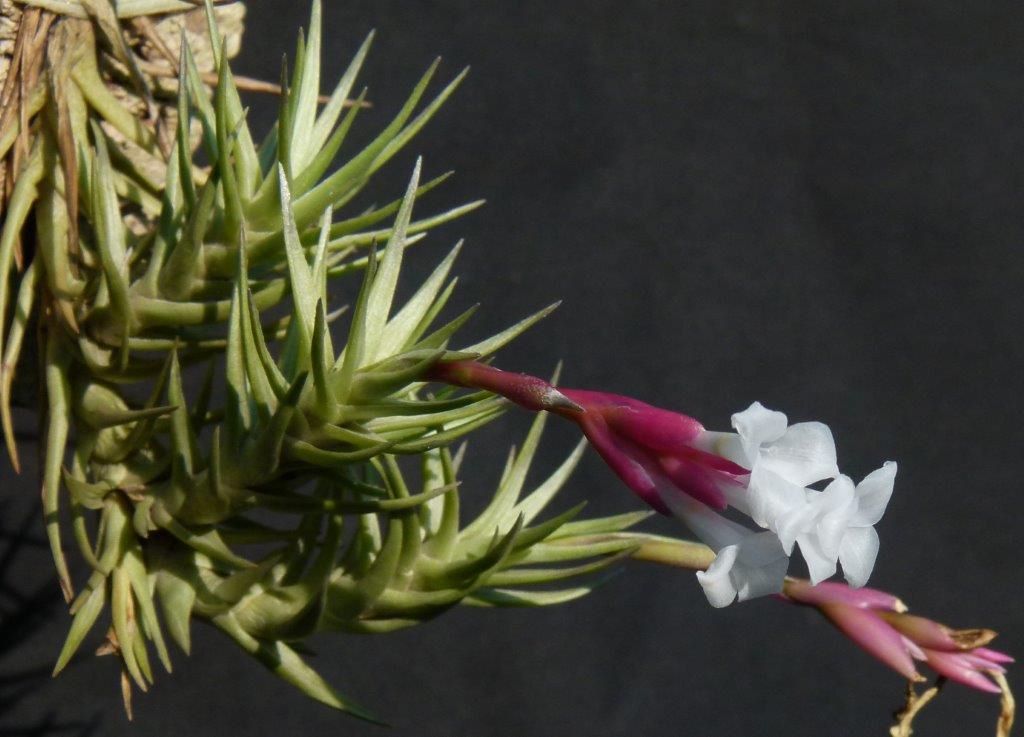
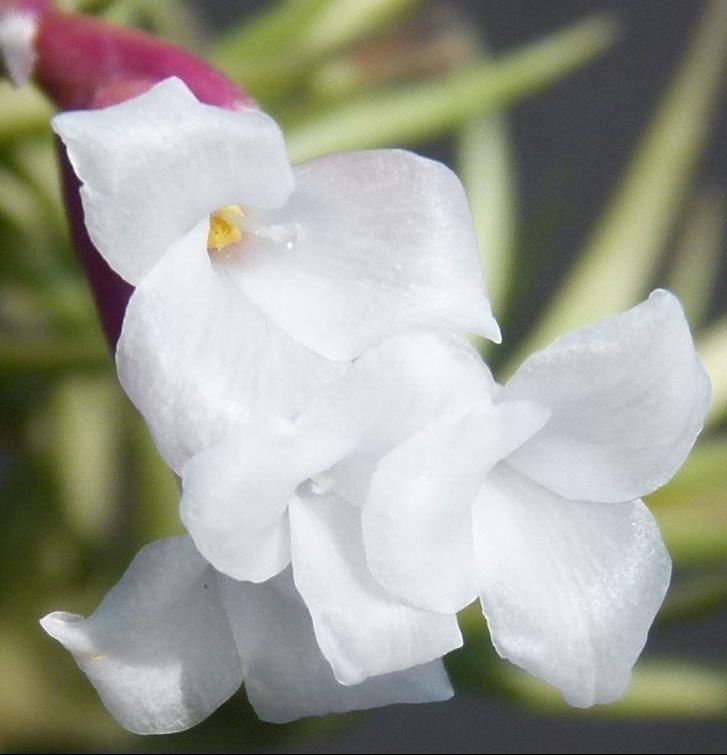
| John Olsen 06/15 |
Nanette Collingwood 05/16 |
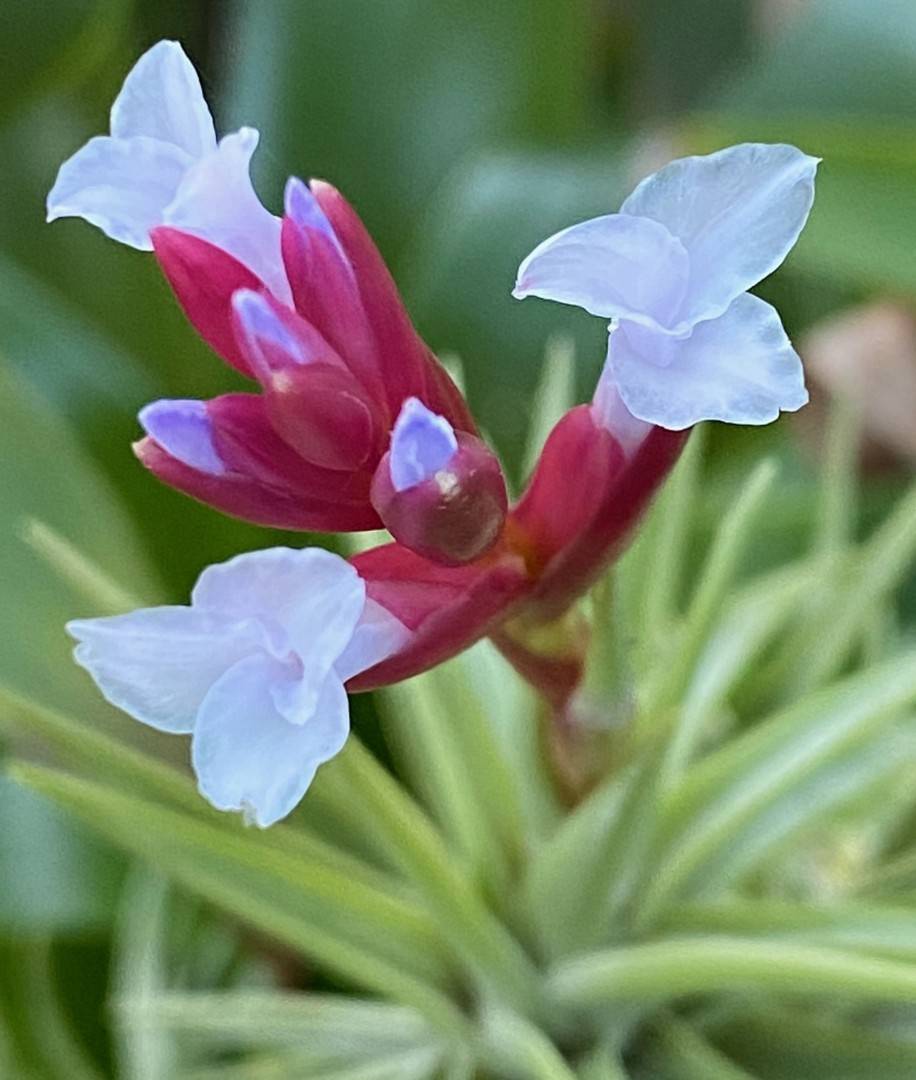


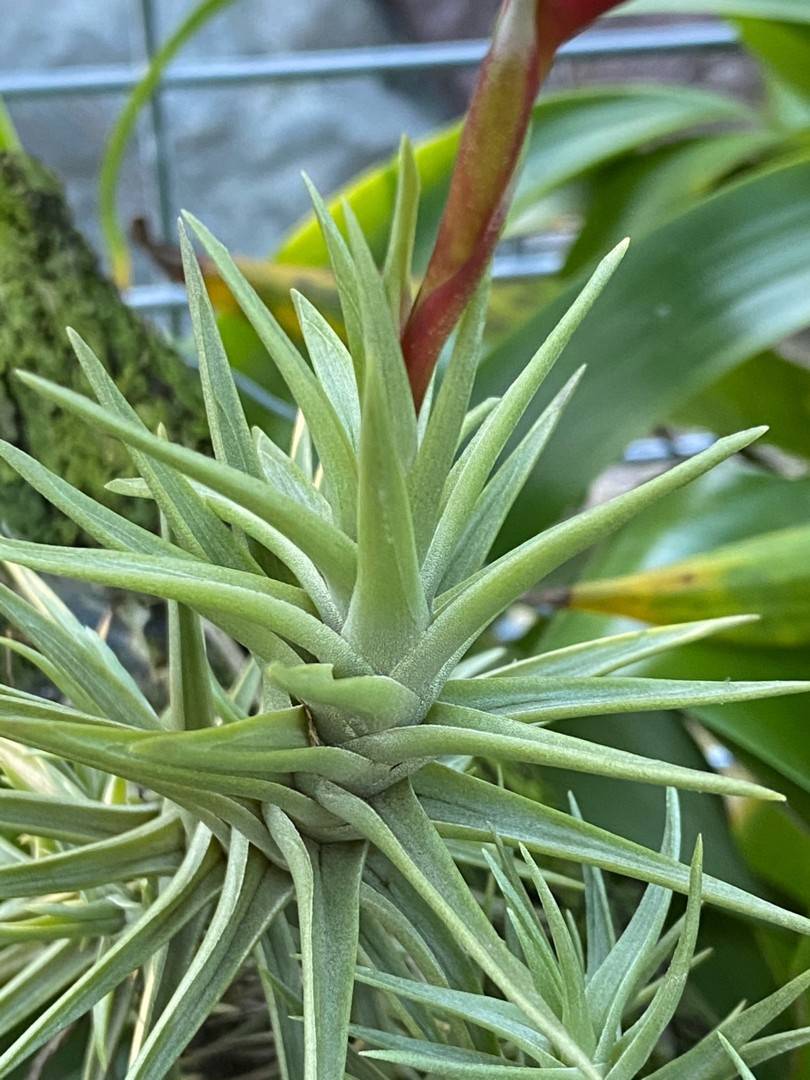 Dale Dixon ... "I’ve had this plant for about 10 years and it’s finally flowered. I don’t have provenance data other than I know 10 years ago I bought a lot of plants from Collector’s Corner and Bob in Cairns.
Dale Dixon ... "I’ve had this plant for about 10 years and it’s finally flowered. I don’t have provenance data other than I know 10 years ago I bought a lot of plants from Collector’s Corner and Bob in Cairns.
I was surprised to see this flowering with a blue tinge to the petals. Anyone else have this happen with Tillandsia 'Cocoensis' or is this a ring in?
It has the very stiff foliage of Cocoensis and the leaves at at +\- 90 deg off stem. Floral bracts are a deep red."
Bob Hudson ... "It looks like T. cocoensis. You did get a T. cocoensis from me when you were buying up species."
Chris Larson ... "One of the advantages of having the disc is that it has a NYP section with the T. cocoensis provisional description and other data in it. Part of Derek's wealth of info difficult to source elsewhere."
Geoff Lawn ... "As Dale indicated by capitalising the name and putting single quotation marks around the name, T. 'Cocoensis' is still listed in the Bromeliad Cultivar Register as a cultivar.
Derek Butcher wrote a good article there on its history and current botanical status. See: BCR #14091"
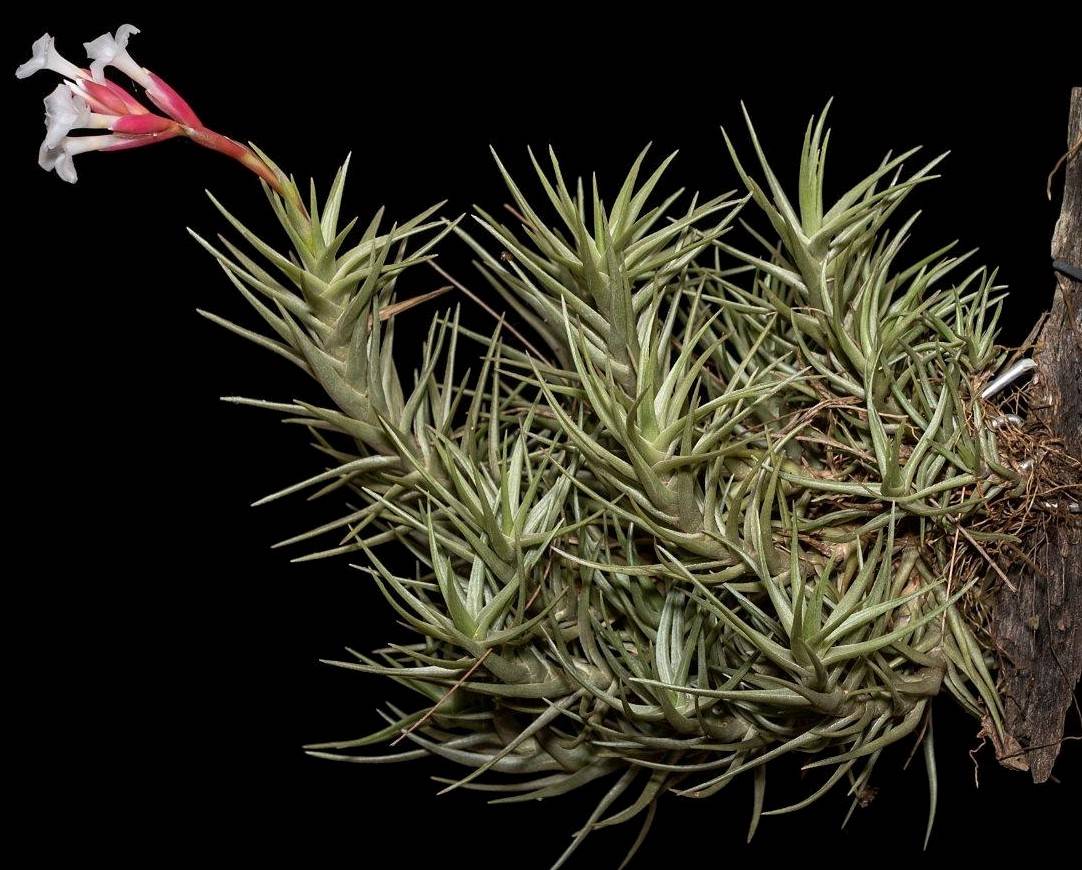
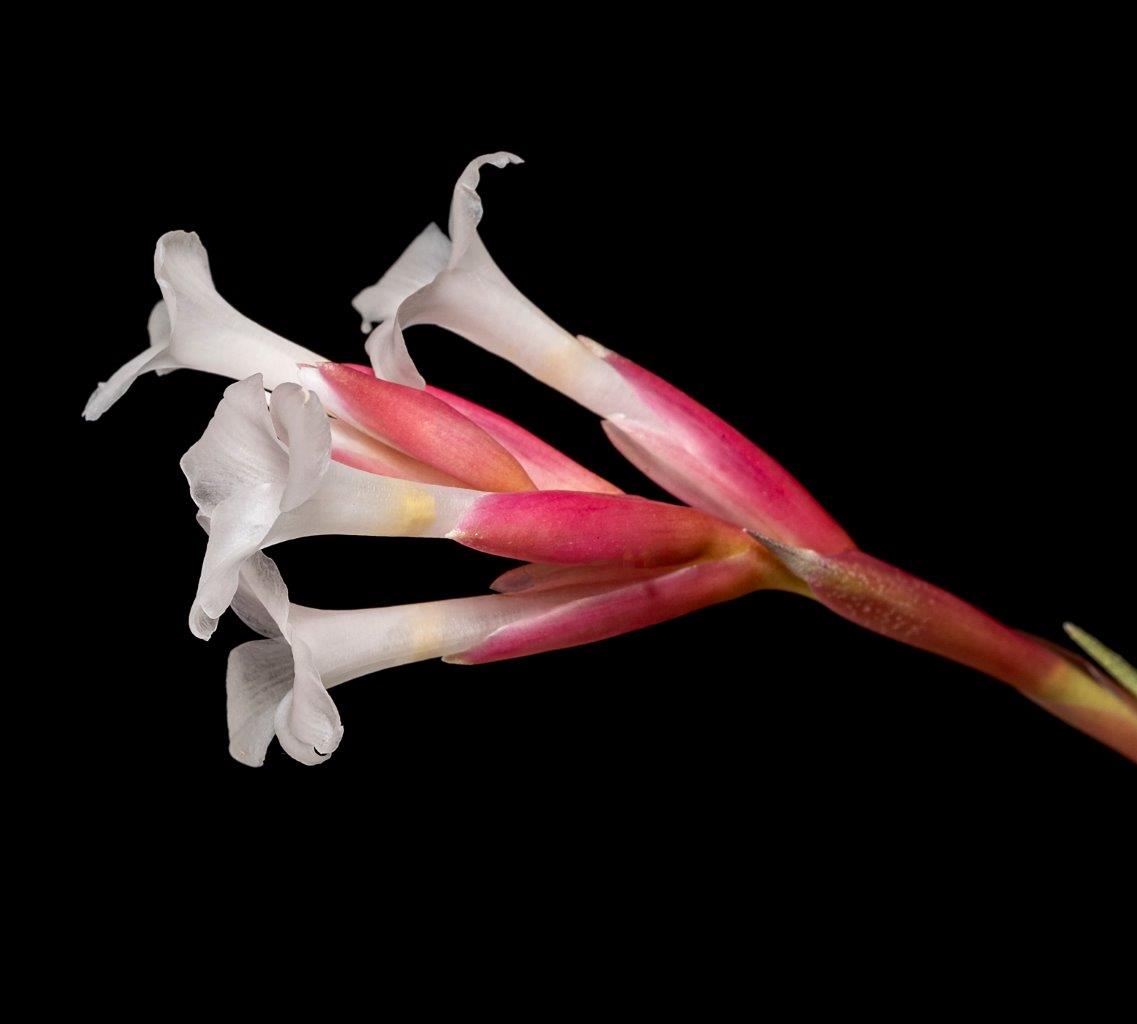
 Rob Bower ... "A pretty little clump of cocoensis. Im perplexed why this is a separate species instead of a form of araujei - maybe a taxonomist can explain."
Rob Bower ... "A pretty little clump of cocoensis. Im perplexed why this is a separate species instead of a form of araujei - maybe a taxonomist can explain."
Peter Tristram ... "That’s a lovely clump! You won't find it officially listed because it was never published. Always add NYP or something to signify it's status. It's different to araujei, which is hugely variable anyway, as well as tenuifolia which is even more variable. Check the DVD. Splitters will have a field day one day! Use Taxon or the DVD to check things. Soon you'll be able use the BSD as in Bromeliad Species Database. It's set up like the BCR but gives users rights to post, if they are BSI members.
There are a few clones too now of this delightful species after my trips to Europe. Len Colgan distributed the clone he obtained years ago, from Renate I think. Various Germans and at least a couple of Austrians, made trips to Brazil in the good old days."
Tillandsia Cocoensis Ehlers spec. nov 2002. - not yet published.
Plant forming clumps, with dense roots growing on rocks, a single plant with long stem, in the basal part many branches, up to 20-50cm long, in diam. 7 to 10cm, hanging, the top bent upwards.
Leaves in large numbers, laxly polystichous, Internodes about 5mm, sticking out horizontally at an angle of about 90°, 4 to 7cm long, very fat and succulent, grey.
Sheath distinct, 10-15mm long, 8 to 12mm wide, broad-triangular, erect and covering and hiding the stem, white at the base, very thin and glabrous, then leatheryand on both sides grey lepidote.
Blade 4-6 cm long, 4 - 5 mm wide over the sheath, triangular acuminate, abaxial convex, canaliculate, the edges bent, green, on both sides densely fine grey appressed lepidote, therefore appears grey.
Scape exceeds the leaves, 3 to 4cm long, slim, glabrous, bright-green, upright, sticking out horizontally, or a little bent.
Scape bracts laxly imbricate, leaving the scape somewhat visible, 2cm long, elliptical, acute, green, dense lepidote, the edges violet lined.
Inflorescense exceeding the leaf-rosette, simple, 3-5cm long, 1.5-2cm in diam., sublax with 3-8 polystichous flowers, the bent green glabrous axis often somewhat visible.
Flower bract 1.5-2cm long, 7-12mm wide, distinctly exceeds the sepal, elliptic cuspidate, the apex acute, the tip of some keeled, red-green or red, membranous with hyaline edges, nerved, adaxial glabrous, abaxial the tip somewhat fine-lepidote.
Sepal 1.1–1.5cm long, 3-4mm wide, lanceolate acute, bright-green or pink, membranous, nerved, the posterior pair keeled and 2/3 or 4/5 high connate.
Petal 2.4–3.3cm long, the blade 5–7.5mm wide, with wavy edges, roundish, narrowing to 3mm at the base, the tips rolled outwards, white.
Stamens enclosed.
Filament 1–1. 2cm long, 0.7mm wide, ribbon-like, with many waves, white,
Anthers 1.5-2mm long, 0.5mm wide, linear, basifix, bright-yellow,
Pollen lemon-yellow.
Style to 9mm long, 0.4–0.5mm in diam., white,
Stigma upright, small, hardly wider than the Style with spreading lobes, white.
Ovary 2–2.5mm long, 2.5mm wide, oval, bright-green.
Type: Brazil, Estado Rio de Janeiro close to the border to Espirito Santo, north from Campos, Morro do Côco, lithophytic,leg. Reinhold Thieken 1983. Holotype:WU.
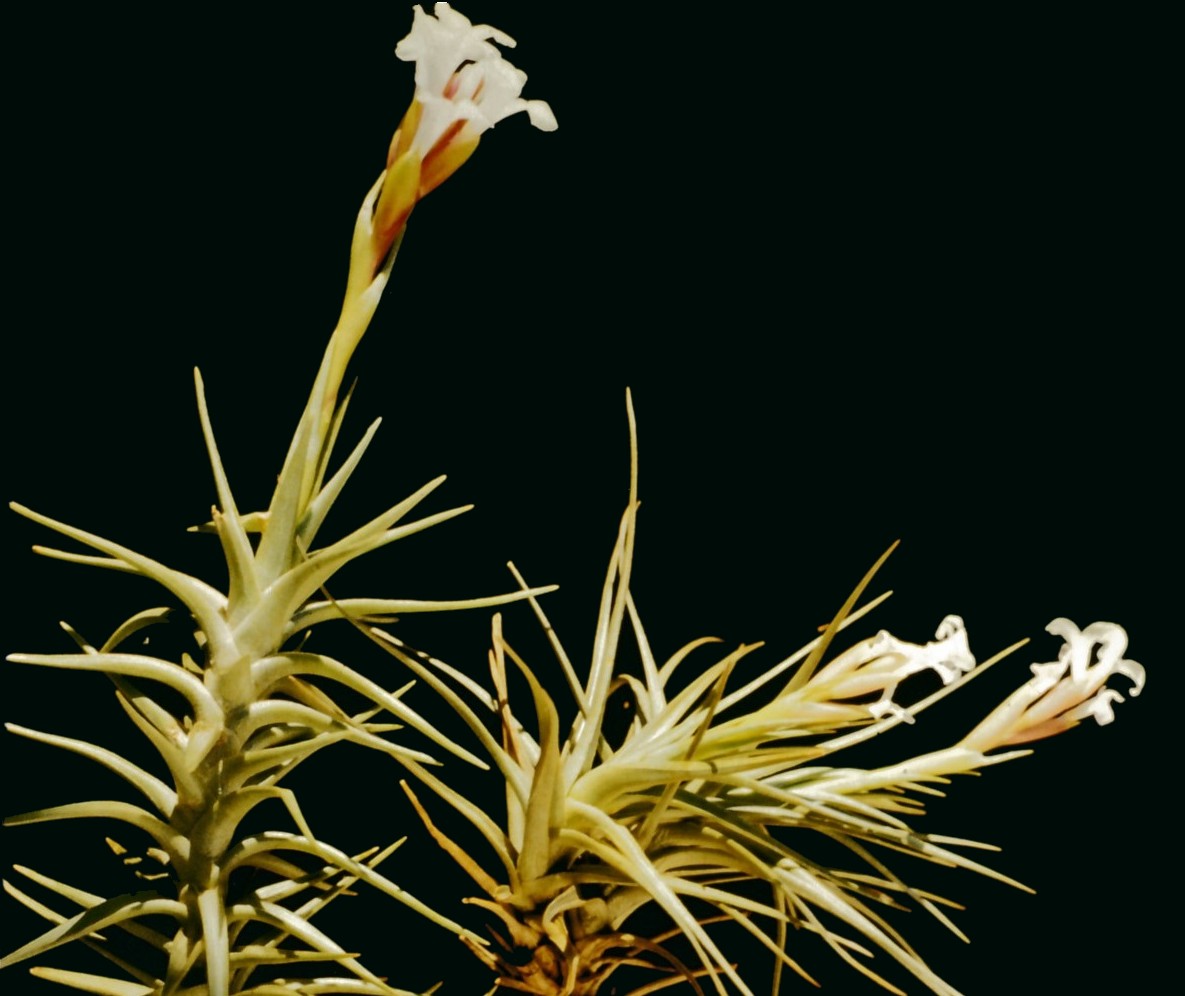

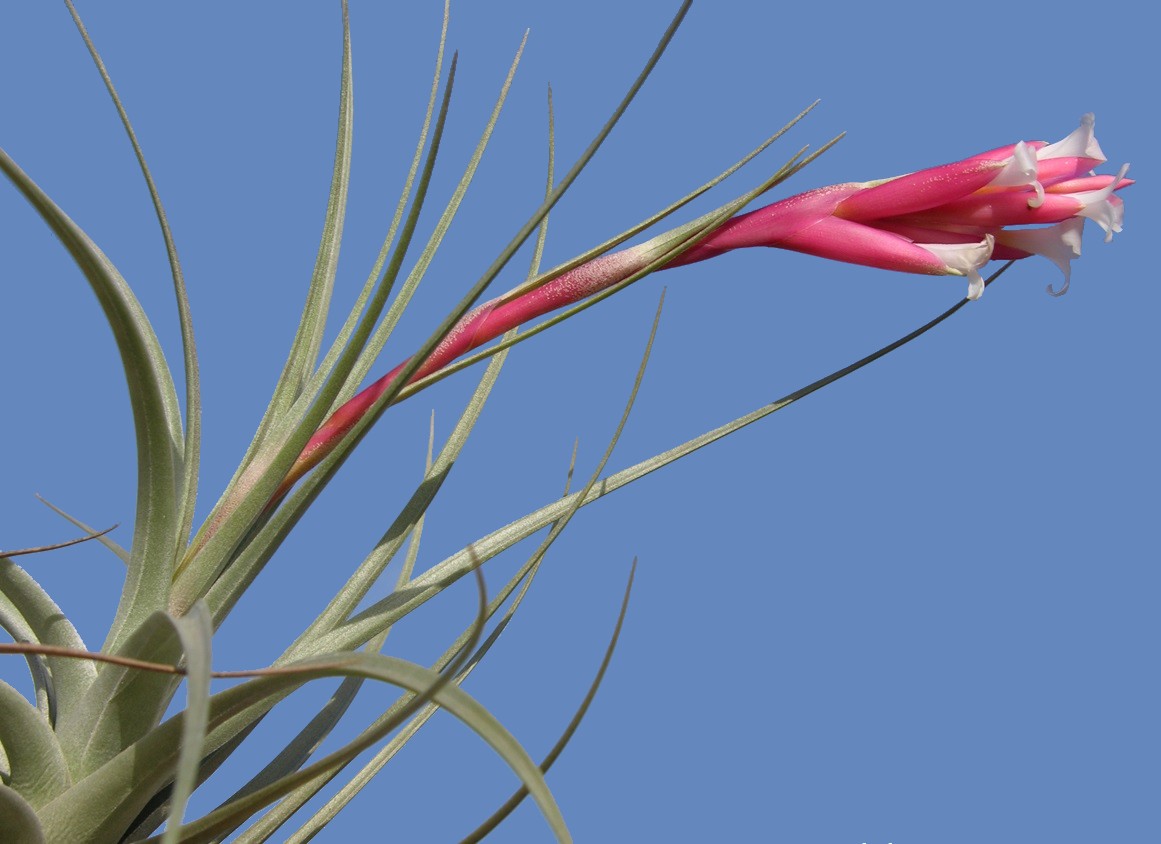
| Renate Ehlers, Cocoensis-left, moraisensis-right |
T. Cocoensis plant |
T. moraisensis as 'Maria Magdalena', Len Colgan |
Tillandsia 'Cocoensis' and T. 'Moraisensis' by Derek Butcher 6/2017
You will not know much about these names because they are in my 'NYP' files (Not yet published) but these names are fairly well known to Tillandsia growers especially T. 'Cocoensis'.
It must have been around 1990 that I started corresponding with Renate Ehlers in Germany. She was forever making trips to mainly Mexico collecting Tillandsias. Many were new to Science so she was forever describing such plants in great detail (In German!). I helped her translate these to English and had to quickly learn botanical German – yes, it is different to normal German! We each learnt a lot by swapping opinions. I still have many of these translations waiting for publication and many will stay there for various reasons. Some like T. 'Cocoensis' and to a lesser extent T. 'Moraisensis' just love to offset and are safely preserved in cultivation with no need to grow from seed with the worry of hybridisation.
Both these plants are linked to T. tenuifolia in the broad sense but whether they are worthy of species status has yet to be decided.
T. cocoensis was originally found by Reinhold Thieken in 1983 in Brazil, Estado Rio de Janeiro close to the border to Espirito Santo, north from Campos, Morro do Côco, as a lithophyte.
T. 'Moraisensis' was originally found in Brazil, State of Rio de Janeiro, North and to the east of Nova Friburgo, Trajano de Morais EB8113 and Santa Maria Madalena, by Klaus and Renate Ehlers, August, 1981, EB8114.
T. 'Moraisensis' differs from T. 'Cocoensis' by plant being bigger, much shorter stems however plant 2 - 3 times as wide. Leaves longer, Blade much longer and more narrow with long tapered tip, less succulent. Petal edges less wavy.
Are the plants still alive in habitat? Nothing seems to have been reported by Brazilian botanists in this 36 year long hiatus or did they consider them as being T. tenuifolia. There are over 500 specimens listed in REFLORA http://reflora.jbrj.gov.br/reflora/PrincipalUC/PrincipalUC.do as T. tenuifolia, but I could find none linking to Morro do Coco or even Santa Maria Madalena!
As far as cultivation goes T. cocoensis arrived in Australia in 1991 followed closely by T. moraisensis in 1993. They certainly liked Adelaide conditions because they flowered and offsetted.
Somehow, T. cocoensis found its way to Rainforest Flora in California and is freely available in the USA.
The future may see these plants described under ICN rules with obligatory herbarium specimens but at the moment the names are recorded as cultivars in the BCR. If this ever happens the ICN naming would take precedence. So in the meantime they should be referred to as Tillandsia 'Cocoensis' and T. 'Moraisensis'
Updated 18/04/22




















